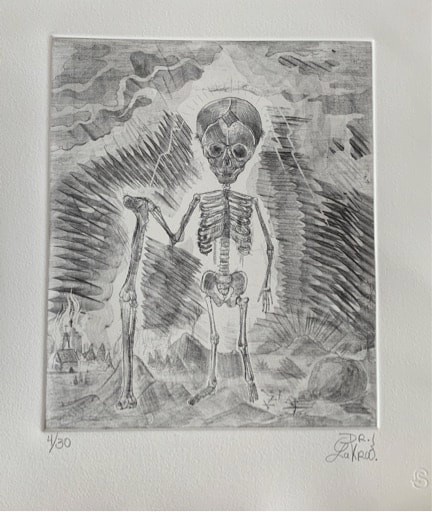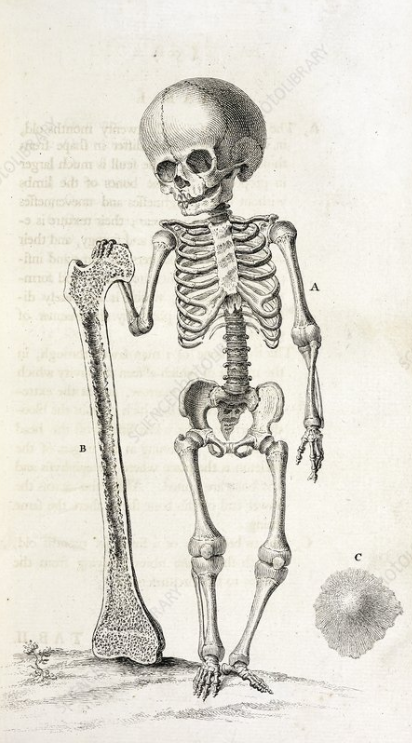|
DR. LAKRA (b. Jerónimo López Ramírez, 1972)
Untitled (Sin titulo) ca. 2019, etching hacia 2019, grabado 11 ¼ x 9 ½ in. 28.5 x 24 cm. A famed tattoo artist, Dr. Lakra here produced a print made of lines so fine and interwoven they resemble spider webs. The skeleton of a child in the state of decay—note the remnants of hair and dripping tissue—holds adult leg bones as if they were a walking stick. The burning church in the lower left, sack of nails in the lower right (a reference to Christ’s Passion?), and lightning bolts—not to mention the main subject of a dead infant—create an image that is poignant, macabre, and troubling. The artist, who has an interest in historical images of natural history, may have based this work on an 18th-century illustration from William Cheselden’s Anatomy of the Human Body (London, 1713), plate 1.
Dr. Lakra, un famoso artista del tatuaje, produjo aquí una impresión hecha de líneas tan finas y entretejidas que se asemejan a una telaraña. El esqueleto de un niño en estado de descomposición —nótese los restos de cabello y tejido que gotea— sostiene los huesos de las piernas de un adulto como si fueran un bastón. La iglesia en llamas en la parte inferior izquierda, el saco de clavos en la parte inferior derecha (¿una referencia a la Pasión de Cristo?) y los relámpagos, sin mencionar el tema principal de un bebé muerto, crean una imagen conmovedora, macabra y preocupante. El artista, que tiene un interés en las imágenes históricas de la historia natural, puede haber basado este trabajo en una ilustración del siglo XVIII de Anatomía del cuerpo humano de William Cheselden (Londres, 1713), lámina 1. |




